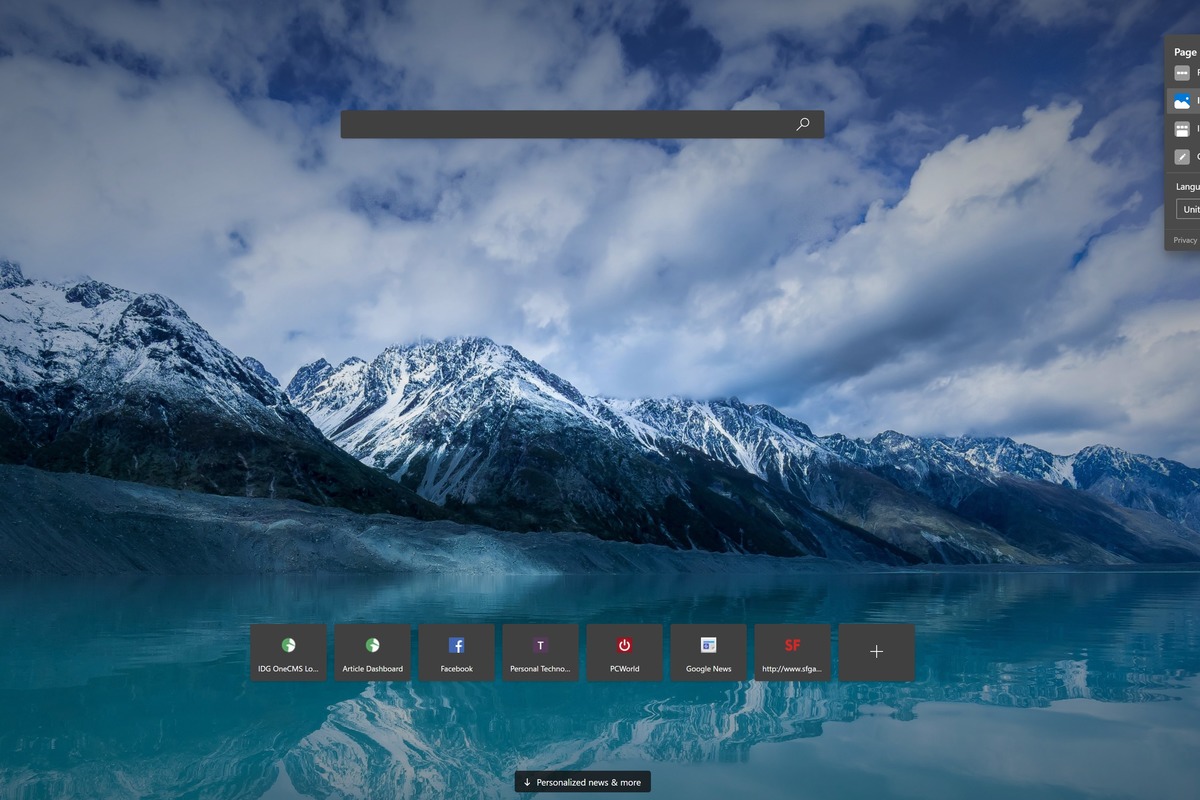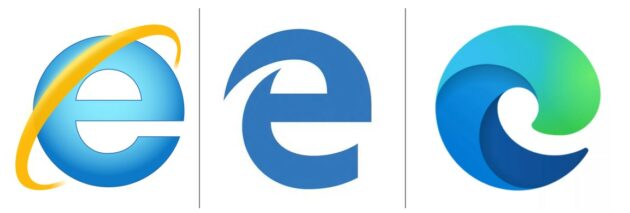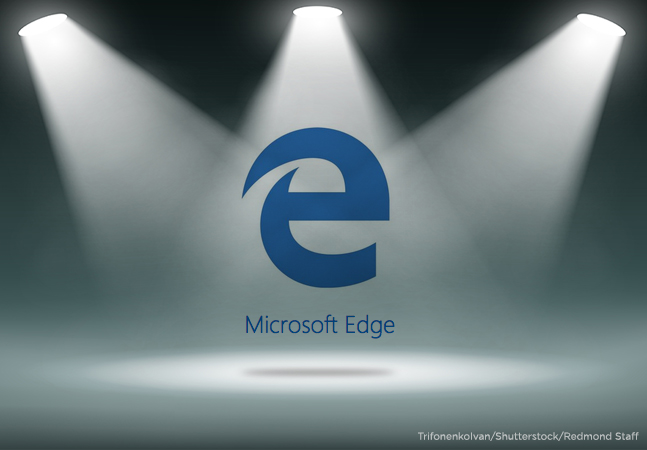
As of Wednesday, January 15, Microsoft will make the non-beta version of its new, Chromium-based version of the Edge browser to Windows 10 Home and Pro users. We covered the beta version of Chromium-based Edge in November. The beta was still pretty raw then—but 'raw' is a relative term. The new Edge project began with a complete and fully functional Web browser—Chromium—so it worked fine for browsing the Web. There were just a few rough edges as far as installing extensions, logging into them, and the like.
We've seen one take waxing nostalgic for the old, purely Microsoft developed version of Edge, but we don't think many people will miss it much. It's not so much that Edge was a bad browser, per se—it just didn't serve much of a purpose. Edge didn't have the breadth of extensions or the user-base enthusiasm of Chrome or Firefox—and it was no better than they are at running crusty old 'Internet Explorer Only' websites and Web apps.
While there is some validity to worrying about one company 'controlling the Web' and one of Google's biggest competitors now becoming a Google downstream, we don't think those concerns add up to much. We don't want to see the full-on Google Chrome become any more indispensable than it already is—but we don't think Microsoft trading in its own fully proprietary, closed-source HTML-rendering engine for one of the two biggest open source rendering engines is a bad thing.
Windows 10 Team 2020 Update supports the new Microsoft Edge based on Chromium (version 85 and above) as the recommended browser for Surface Hub 2S and Surface Hub (v1). This article explains how to install the browser using one of three methods: a provisioning package, Microsoft Intune, or third party Mobile Device Management (MDM) provider. Re: Edge Chromium and OnPrem Sync @FlemmingL On-Premises Sync work by writing to and reading from the profile.pb file. If the file is not placed centrally (like on a File Share) where the user can access the file, then the file will have to be transferred manually to the same location on the other computer.

We downloaded the final beta version of Chromium-based Edge—the one available on the afternoon of the 14th, one day before the official launch—and took it for a spin in a Windows 10 virtual machine. Mostly, it still just looks like a slightly plainer version of Chrome—which isn't a bad thing! Sites load snappily, UI elements are familiar, and so forth. One of the biggest obvious improvements since the last time we test-drove Chromium Edge is the ability to install extensions from the official Chrome Web store.
AdvertisementMicrosoft's own Web store is still extremely sparse—we went looking for the must-have, EFF-developed HTTPS Everywhere, and instead we got a recommendation for 'NBC Sports'—which does not seem well-loved by its users. However, typing 'chrome Web store' in the address/search bar took us right where we needed to go and presented us with an obvious tool-tip for installing third-party extensions. That was that—HTTPS Everywhere installed with a single click, just as you'd expect it to on Chromium or Google Chrome itself.
Chromium-based Edge is still missing a couple of obvious features to compete with the full Google Chrome experience—most notably, browser history and extensions don't sync between devices yet. This is described as a temporary problem in the 'Known Issues' page, and it may even be fixed already in the production version launching today.
Pushing the new Edge as something to look forward to right now is difficult—we suspect most people who really care about their browser will continue using Chrome, Firefox, or whatever less-well-known variant they've found and learned to love. Meanwhile, the people who have actually been actively using Edge likely won't notice much of a change—unless Microsoft bobbles something in the user data import functionality when they push the official, non-beta version out through Windows Update later this month.
In all likelihood, the change absolutely will improve the lives of the folks who 'just click the blue E' in the long run, though. It will likely make it easier for Microsoft to lure more technical users—who demand feature and extension parity but might be interested in Edge's Azure authentication back-end—away from Google Chrome.
This article initially stated that Chromium-based Edge was being pushed over Windows Update beginning on the 15th; a Microsoft representative reached out to correct us: it was only available for download beginning on the 15th, and will not be pushed over Windows Update until later this month. The article has been updated accordingly.
-->Windows 10 Team 2020 Update supports the new Microsoft Edge based on Chromium (version 85 and above) as the recommended browser for Surface Hub 2S and Surface Hub (v1). This article explains how to install the browser using one of three methods: a provisioning package, Microsoft Intune, or third party Mobile Device Management (MDM) provider.
Important
By default, Surface Hub devices are preinstalled with Microsoft Edge Legacy (version 44). After installing the 2020 Update, it's recommended to switch to the new Microsoft Edge browser; support for Microsoft Edge Legacy will end on March 9, 2021.
Install Microsoft Edge using a provisioning package
- From a PC, download the Microsoft Edge provisioning package (MicrosoftEdgeInstaller.ppkg) to the root folder of a USB drive.
- Insert the USB drive into Surface Hub.
- From Surface Hub, open Settings and enter your admin credentials when prompted.
- Navigate to Surface Hub > Device management. Under Provisioning packages, select Add or remove a provisioning package.
- Select Add a package.
- Choose the Microsoft Edge provisioning package and select Add.
- You will see a summary of the changes that the provisioning package applies. Select Yes, add it.
- Wait for the Microsoft Edge installation to complete. Once it's installed, navigate to the Surface Hub Start menu to access the new Microsoft Edge.
Note
If there’s a newer version of Microsoft Edge available, it will be automatically updated.

Install Microsoft Edge using Intune
Note
The Surface Hub device must be enrolled into and managed using Intune. For more information, see Manage Surface Hub 2S with Microsoft Intune.
- Download the Microsoft Edge installer.
- Use the current version from Stable channel(version 85)
- Choose Windows 64-bit
- Add the Microsoft Edge installer as a line-of-business app to Microsoft Intune.
- If you choose to use Microsoft Edge Update to handle automatic updates to Microsoft Edge, be sure to configure the Ignore app version setting the App information pane. When you switch this setting to Yes, Microsoft Intune will not enforce the app version that's installed on the Surface Hub device.
Install Microsoft Edge using third party MDM provider
Edge Chromium On Mac
- Download the Microsoft Edge installer from Microsoft.
- Use the current version from Stable channel(version 85)
- Choose Windows 64-bit
- Stage the Microsoft Edge installer on a hosted location, such as a local file share (servershareMicrosoftEdgeEnterpriseX64.msi). The Surface Hub device must have permission to access the hosted location.
- Use EnterpriseDesktopAppManagement Configuration Service Provider (CSP) through your MDM provider to install Microsoft Edge.
Configure Microsoft Edge
Default Microsoft Edge policies for Surface Hub
Microsoft Edge is preconfigured with the following policy setttings to provide an optimized experience for Surface Hub.
Tip
It's recommended to retain the default value for these policy settings.
| Policy setting | Recommended experience | Default value |
|---|---|---|
| AutoImportAtFirstRun | Do not automatically import datatypes and settings from Microsoft Edge Legacy. This avoids changing signed-in users' profiles with shared settings from the Surface Hub. | 4 |
| BackgroundModeEnabled | Allow Microsoft Edge processes to keep running in the background even after the last browser window is closed, enabling faster access to web apps during a session. | 1 |
| BrowserAddProfileEnabled | Do not allow users to create new profiles in Microsoft Edge. This simplifies the browsing and signed-in experience. | 0 |
| BrowserGuestModeEnabled | Enables only one user to sign-in to Microsoft Edge. This simplifies the browsing and signed-in experience | 0 |
| BrowserSignin | Enables users to enjoy Single Sign-On (SSO) in Microsoft Edge. When a user is signed into Surface Hub, their credentials can flow to supported websites without requiring them to re-authenticate. | 1 |
| ExtensionInstallBlockList | Prevents non-admin users from installing new extensions in Microsoft Edge. To configure a list of extensions to be installed by default, use ExtensionInstallForcelist. | * |
| HideFirstRunExperience | Hides the first run experience and splash screen that's normally shown when users run Microsoft Edge for the first time. Since Surface Hub is a shared device, this simplifies the user experience. | 1 |
| InPrivateModeAvailability | Disables InPrivate mode. Since End Session already clears browsing data, this simplifies the browsing and signed-in experience. | 1 |
| NewTabPageSetFeedType | Shows the Office 365 feed experience on new tab pages. When a user is signed into Surface Hub, this enables fast access to their files and content on Office 365. | 1 |
| NonRemovableProfileEnabled | When a user is signed into Surface Hub, a non-removable profile will be created using their organizational account. This simplifies the Single Sign-On (SSO) experience. | 1 |
| PrintingEnabled | Disables printing in Microsoft Edge. Surface Hub does not support printing. | 0 |
| ProActiveAuthEnabled | Enables Microsoft Edge to proactively authenticate signed-in users with Microsoft services. This simplifies the Single Sign-On (SSO) experience. | 1 |
| PromptForDownloadLocation | Automatically saves files to the Downloads folder, rather than asking users where to save the file. This simplifies the browsing experience. | 0 |
Important
Deployable progressive web apps (PWAs) are not currently supported on the Windows 10 Team operating system. Note also that the Microsoft Edge policy setting WebAppInstallForceList is not supported on Surface Hub.
Edge On Chromium Version
Configure Microsoft Edge policy settings
Use Microsoft Edge browser policies to configure browser settings in Microsoft Edge. These policies can be applied using: Amec black beautyamerican meadows equestrian center.
- Microsoft Intune,
- Your preferred Mobile Device Management (MDM) provider that supports ADMX Ingestion, or
- Provisioning packages using ADMX Ingestion in Windows Configuration Designer.
Configure Microsoft Edge updates
By default, Microsoft Edge is updated automatically. Use Microsoft Edge update policies to configure settings for Microsoft Edge Update.Note that Surface Hub does not support the following Microsoft Edge update policies:

- Allowsxs – On Surface Hub, Microsoft Edge Stable channel always replaces Microsoft Edge Legacy.
- CreateDesktopShortcut – Surface Hub does not use desktop shortcuts.
Tip
Edge On Chromium Browser
Microsoft Edge requires connectivity to the Internet to support its features. Ensure that the necessary domain URLs are added to the Allow list to ensure communications through firewalls and other security mechanisms.
Edge Chromium On Server 2016
Related links
